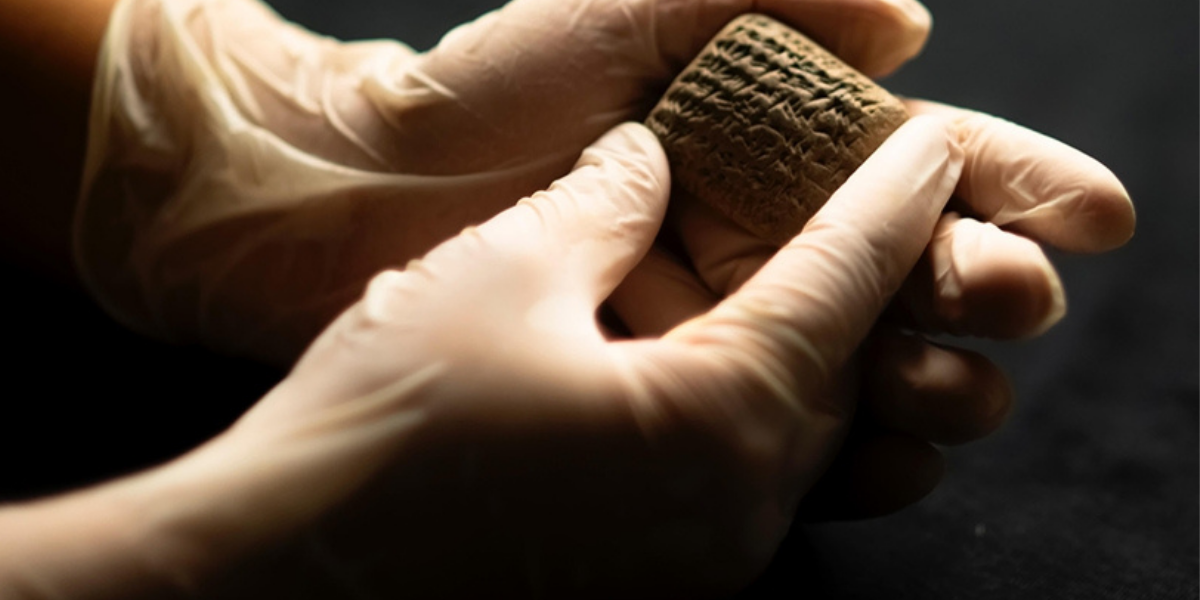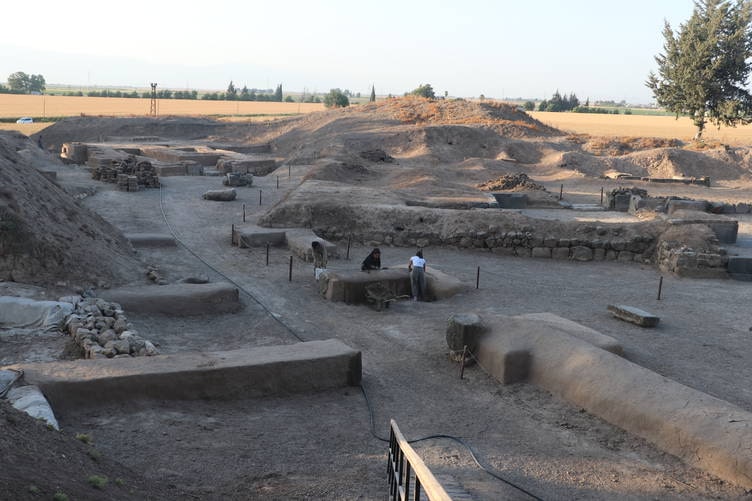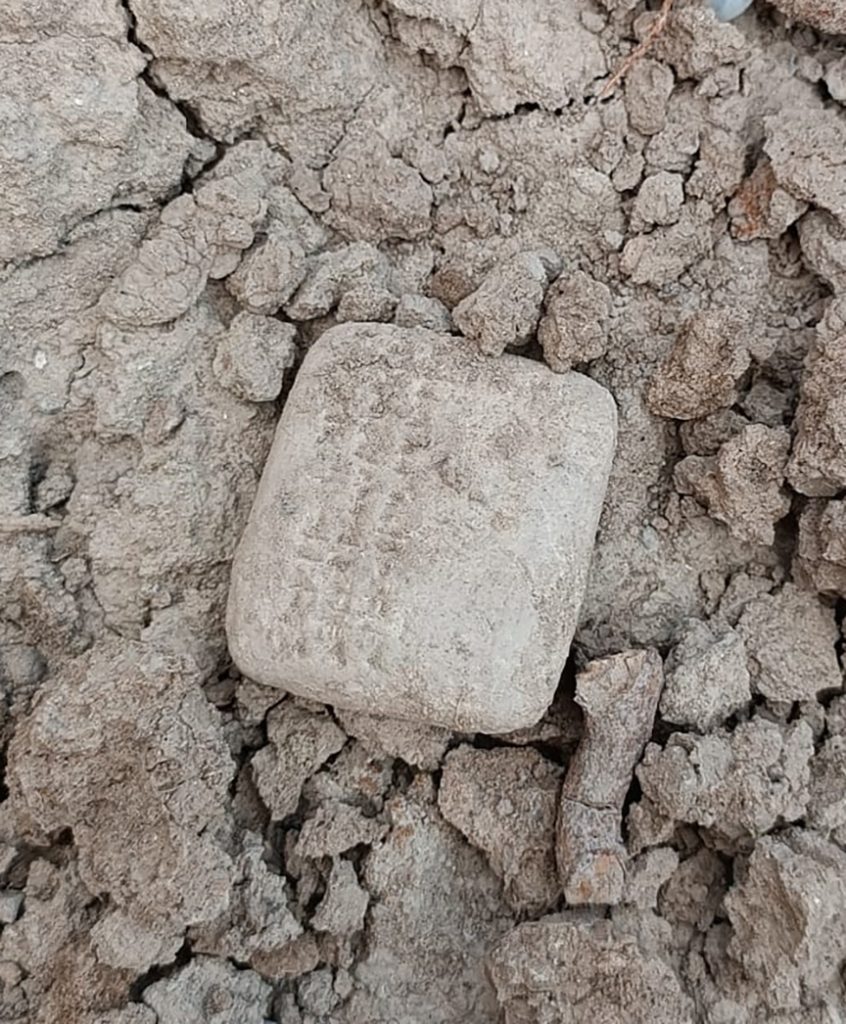
3500-year-old clay tablet written in Akkadian discovered at Aççana mound
Archaeological excavations at Aççana mound in Reyhanlı district of Hatay province in southern Türkiye have unearthed a 3500-year-old clay tablet written in Akkadian.
The Aççana mound contains the remains of Alalah, an important city in ancient times.
The mound dates back to 4000 BC and is known to have been inhabited continuously for 4000 years.

Its location in the central part of the Amik Plain, near the bend of the Asi River, made Alalah an important commercial, diplomatic and cultural settlement.
📣 Our WhatsApp channel is now LIVE! Stay up-to-date with the latest news and updates, just click here to follow us on WhatsApp and never miss a thing!!
The first excavations at Aççana mound were started in 1937 by Leonard Woolley, who found traces of settlement spanning a wide period of time from the 4th millennium BC to the 13th century AD.
The excavations at Aççana mound continue under the direction of Assoc. Prof. Dr. Murat Akar, Head of the Department of Protohistory and Prehistoric Archaeology, Department of Archaeology, Mustafa Kemal University, Hatay.

In this excavation season, the excavation team found a 3500-year-old clay tablet written in Akkadian. The tablet contains findings indicating that a large amount of furniture was traded.
The tablet weighing 28 grams will provide important information about the commercial life of the Late Bronze Age period.
The tablet is 4.2 centimeters long, 3.5 centimeters wide and 1.6 centimeters thick.
Johns Hopkins University Faculty Member Assoc. Prof. Dr. Jacob Lauinger and PhD student Zeynep Türker are continuing their linguistic studies on the numbers in the find, which records the purchase of a large amount of wooden tables, chairs and stools, and the issues such as who bought or who was given to whom.
Minister of Culture and Tourism Mehmet Nuri Ersoy announced the discovery of a 3500-year-old clay tablet written in Akkadian on his social media account.
In his message, Ersoy said.
“We are working meticulously to carry Anatolia’s rich heritage to future generations.
A very important tablet has come to light during the ongoing works at Aççana mound, known as “Eski Alalah” in Reyhanlı district of Hatay.
According to the first readings, the Akkadian cuneiform tablet, dated to the 15th century BC, contains records of a large amount of furniture purchases.
We believe that this 28-gram tablet will provide a new perspective to understand the economic structure and state system of the Late Bronze Age.
For his devoted work in the discovery of the tablet
Congratulations to our @kazardb teams.”
Anadolu’nun zengin mirasını gelecek nesillere taşımak üzere büyük bir titizlikle çalışıyoruz.
— Mehmet Nuri Ersoy (@MehmetNuriErsoy) July 22, 2024
Hatay’ın Reyhanlı ilçesinde "Eski Alalah" olarak bilinen Aççana Höyük’te süren çalışmalarda oldukça önemli bir tablet gün ışığına kavuştu.
İlk okumalara göre M.Ö. 15'inci yüzyıla… pic.twitter.com/vW9gqbgZwQ
You may also like
- A 1700-year-old statue of Pan unearthed during the excavations at Polyeuktos in İstanbul
- The granary was found in the ancient city of Sebaste, founded by the first Roman emperor Augustus
- Donalar Kale Kapı Rock Tomb or Donalar Rock Tomb
- Theater emerges as works continue in ancient city of Perinthos
- Urartian King Argishti’s bronze shield revealed the name of an unknown country
- The religious center of Lycia, the ancient city of Letoon
- Who were the Luwians?
- A new study brings a fresh perspective on the Anatolian origin of the Indo-European languages
- Perhaps the oldest thermal treatment center in the world, which has been in continuous use for 2000 years -Basilica Therma Roman Bath or King’s Daughter-
- The largest synagogue of the ancient world, located in the ancient city of Sardis, is being restored











Leave a Reply